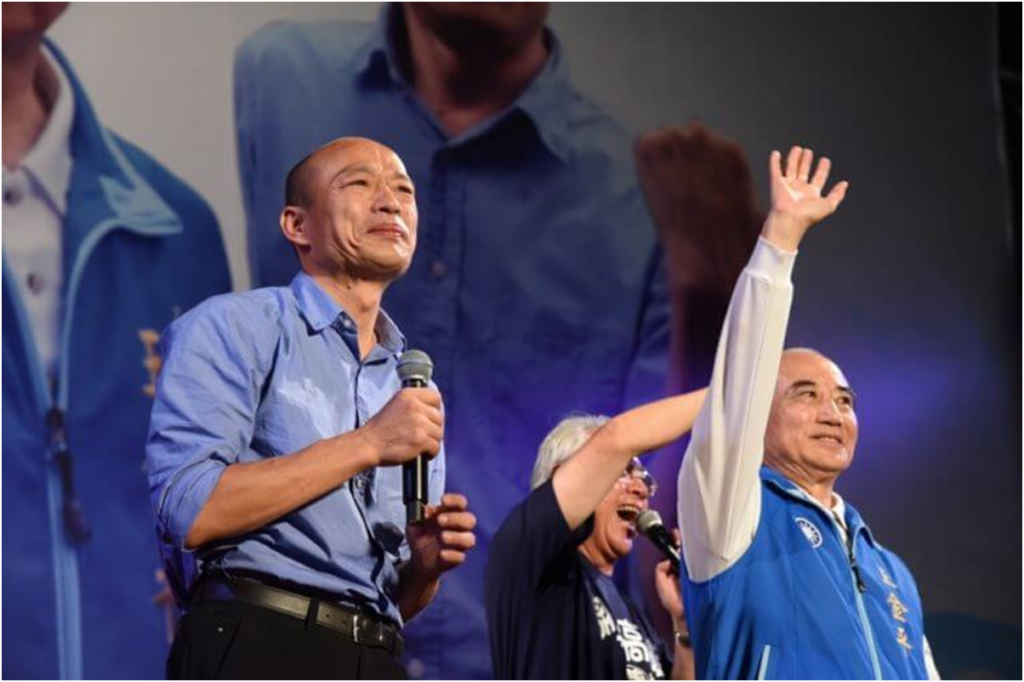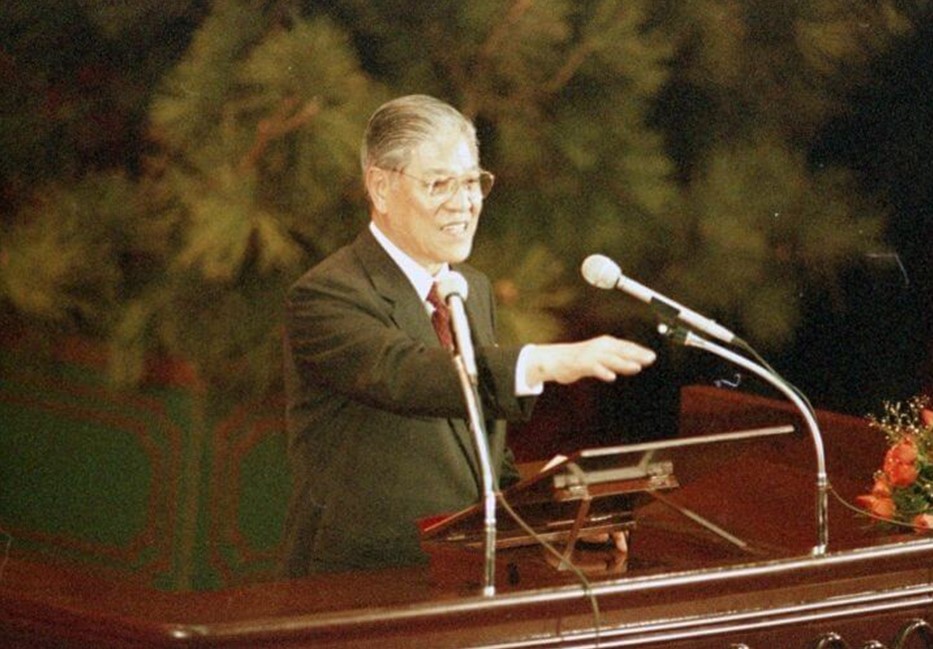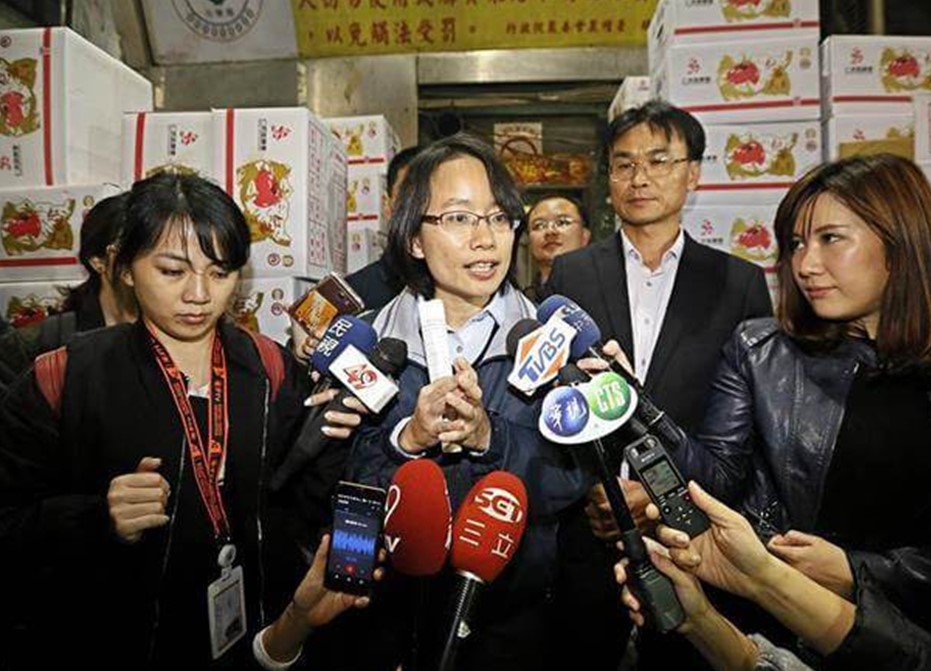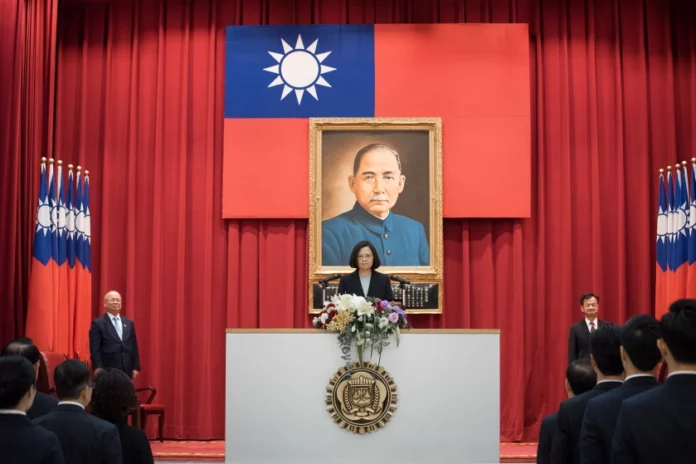In Taiwan’s 2022 local elections, the Blue Camp (centered around the Kuomintang- the Nationalist Party of China-KMT) won the governing position in 13 counties and municipalities. KMT saw its biggest victories in localities where it aligned with local factions, so much so that some media claimed this election was “not a victory for the KMT, but a victory for local factions.”

But what are the local factions? What is their nature? And how do we fight against them?
Historical origin of local factions
According to scholar Chao Yongmao, Taiwan’s local factions, or local political machines, are “combinations of local political figures united based on geography, blood, clan or social relations to fight for local political power.” Its core are mostly local gentry, rich families, landlords and capitalists closely affiliated with them.
In 1949, after the KMT government fled to Taiwan, it relied on its remaining military forces and took over Japan’s colonial assets in Taiwan and later received aid from US imperialism. It was a dictatorial rule of the KMT bureaucracy from the beginning, with the Chiang Kai-shek family at its top, as one of the vassal states of US imperialism in Asia. Due to its foreign power, in addition to the terror of its military and police forces, it also needed the cooperation and submission of Taiwan’s native ruling class. The “local factions” emerged from this layer of native ruling class.

The local factions paid political loyalty to the KMT in exchange for economic privileges under the dictatorship. Control over local politics is achieved by participating in local elections and controlling local “civil organizations” (the Farmers’ Associations, the Irrigation Associations, temples, etc.). These so-called civil organizations are fronts for local bourgeoisie to recruit local residents through profit sharing to serve as clientele to promote policies that benefit them. At that time, the KMT dictatorship stood above these local factions. Through its political, economic and military control, it implemented divide and rule, incorporating and dividing local factions, and limiting their reach, acting as a coordinator and arbiter among local factions.
Guided by US imperialist policies, Chiang and his bureaucracy relied on this position to promote partial land reforms, moving Taiwan towards a capitalist industrialized economy.
The rise and transformation of local factions
As Taiwan’s capitalism developed, local factions also grew and formed intricate networks with criminal gangs and big capitalists. When China embarked on the road of capitalist restoration and established diplomatic relations with the US, the international status of “the Free China” and the authority of the KMT dictatorship were severely damaged. This process also weakened the KMT’s bureaucratic elite of China mainland origin. Influence of native faction leaders grew in the political and economic arena.
Gradually, Taiwan’s capitalism shifted from outsourced low-end manufacturing to high-tech manufacturing, service industries and finances. It needed to move from a state-led economy to a more laissez-faire capitalism to integrate better into the global capitalist market. The process was reflected in the power struggle within the KMT. In the 90s, the mainstream faction of the KMT, represented by Lee Teng-hui, defeated the minority faction. Local factions and the native bourgeoisie were no longer the servants to mainland elites and the party-state, but were becoming their equals. The democratic political reforms during Lee’s regime (the abolition of the National Congress and direct presidential election, etc) were exactly the means used by local political figures to attack mainlander elites. Native political elites leveraged the democracy movement for power, while reining in the radicalizing masses from challenging the system. This kept the game going among the bourgeoisie factions.

On the other side, the Democratic Progressive Party (DPP) advocated for liberal reforms, representing the forces of the emerging new layer of bourgeoisie and radical petty bourgeois elements. The DPP also needed to cooperate with local factions to fight for local power.
Democratization was a process in which local factions went from vassals to becoming the masters. Within the KMT, this manifested as the ascension of the Native faction (that is, local elites affiliated with KMT) at the party center and national level. KMT, which was defeated in 1949, is now controlled by local politicians and businessmen in Taiwan, giving it a “localized” character. It still represents the relatively pro-China political stance in Taiwan’s bourgeoisie, and the corruption has grown more blatant. Local factions, once controlled by the Party, have become the Party. In elections, most local factions still run under the KMT banner.

Liberalism cannot end local factions
Since the democratization process started, many liberal scholars have proposed various legal means to counter local factions, such as banning voter bribery, electoral reform, democratic civil education, etc. However, bourgeois legal reforms are extremely limited in curbing the power of capital itself. The history of Taiwan’s capitalism is linked to corruption and dirty works. Recent elections have shown that none of these reforms can effectively curb the local factions’ power. In fact, after years in office, the DPP has also colluded with local factions. For example, Chiayi’s Lin faction has moved into the party center in DPP.
The power base of local factions stem from their vast wealth and long-term monopoly on local politics, as one component of Taiwan’s bourgeois establishment. The reason the local factions regained power and are even expected to gain national power is the weakness of DPP and the social resentment generated by its neoliberal policies, and the lack of a mass left-wing party in Taiwan.
Due to the anger of the masses and young people towards the two bourgeois parties, candidates from local factions are also downplaying their party affiliation. For example, Han Kuo-yu of the Blue camp claims to be “beyond blue and green”. Many local politicians even ran as independents. Local factions in the Green Camp (centered around the DPP) faced huge public resentment with the DPP government, and suffered serious internal fight and divisions. This once again highlighted the fragmentation of Taiwan’s political landscape.
A considerable part of the public resentment to neoliberal policies has been capitalized by local factions in the Blue camp, even though they themselves support neoliberal policies, perhaps even more so than the DPP. At the same time, due to the lack of a working-class alternative to the establishment, the electoral machines operated smoothly. For example, one of DPP’s weaknesses was agricultural reform. The DPP government sought to counter the parasitic agricultural oligarchs like Yunlin’s Chang faction through top-down administration and legislation, with assistance of the liberal peasant movement (the Taiwan Rural Front) in the cabinet. The result was a huge defeat which was even unpopular among the rank and file farmers. These agricultural oligarchs won the election in Yunlin, a large agricultural county.

After the local factions took over local politics, they continued to seek economic benefits for themselves and their allies through corruption. Han Kuo-yu, who has the support of several local factions, stated after being sworn in that he would push the central government to open up Chinese investment in Taiwan’s real estate, providing local factions with huge profits from real estate speculation.
Our strategy to root out local factions
In 2014, the DPP rode the wave of mass anti-KMT radicalization triggered by the Sunflower Student Movement due to the lack of a mass left-wing party. They won more than half of the counties and municipalities (13 in total). In that year, many KMT-affiliated local electoral mechanisms failed to mobilize, and even switched sides to support the DPP in order to continue their reign. Now a similar thing is happening to the DPP itself.
What paralyzed the local mechanisms was the mood of mass resistance infecting the majority of rural people who used to be politically conservative and passive. The turmoil that started in the city spread to even the conservative and relatively closed agricultural counties.
We see what really threatens local factions is not the liberal faction of the bourgeoisie, but a mass movement against the capitalist establishment. No bourgeois party can eradicate corrupt local factions. They will only reconcile with them. The moral bankruptcy of the liberal ruling class will allow these corrupt conservatives to regain power. However, the current wave of resentment of the masses and young people is challenging the illusions about the two bourgeois parties. In this sense, the victory of local factions is likely to be temporary.
Whether local factions or other forces of the establishment, they will vigorously implement neoliberal policies that hurt workers. Only a working-class party can have real independence, unite and lead mass struggles, and fight back against the entire capitalist system. Confronting corrupt local factions is part of the fight against capitalism. It takes a mass left-wing party and a socialist workers’ movement to oppose the capital establishment, the two-party system on the national level, and the monopolies of local factions on the local level.



